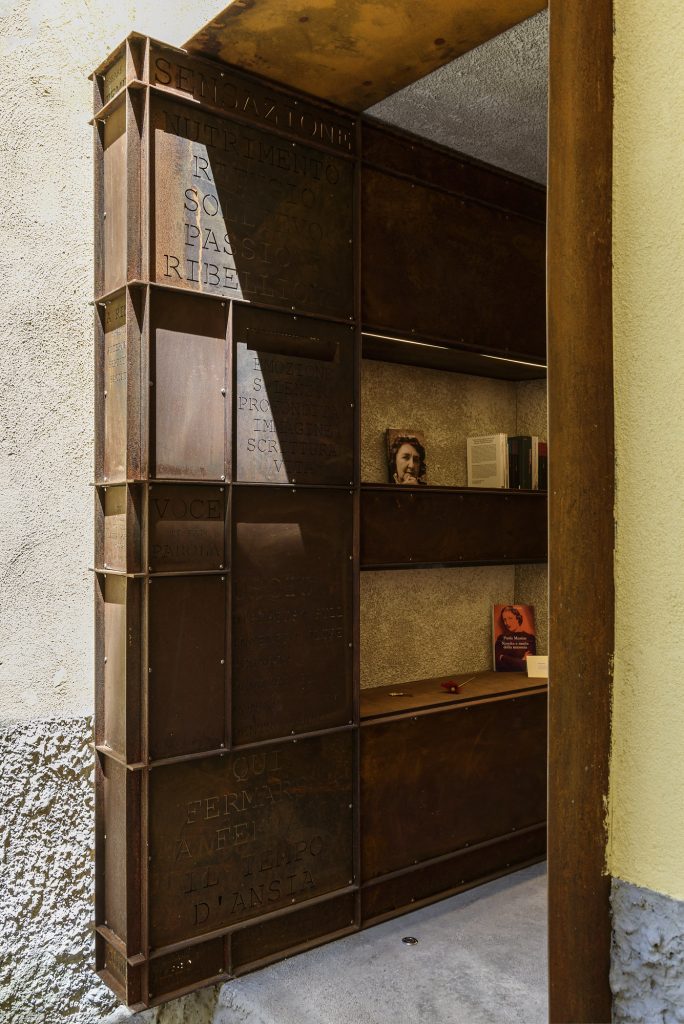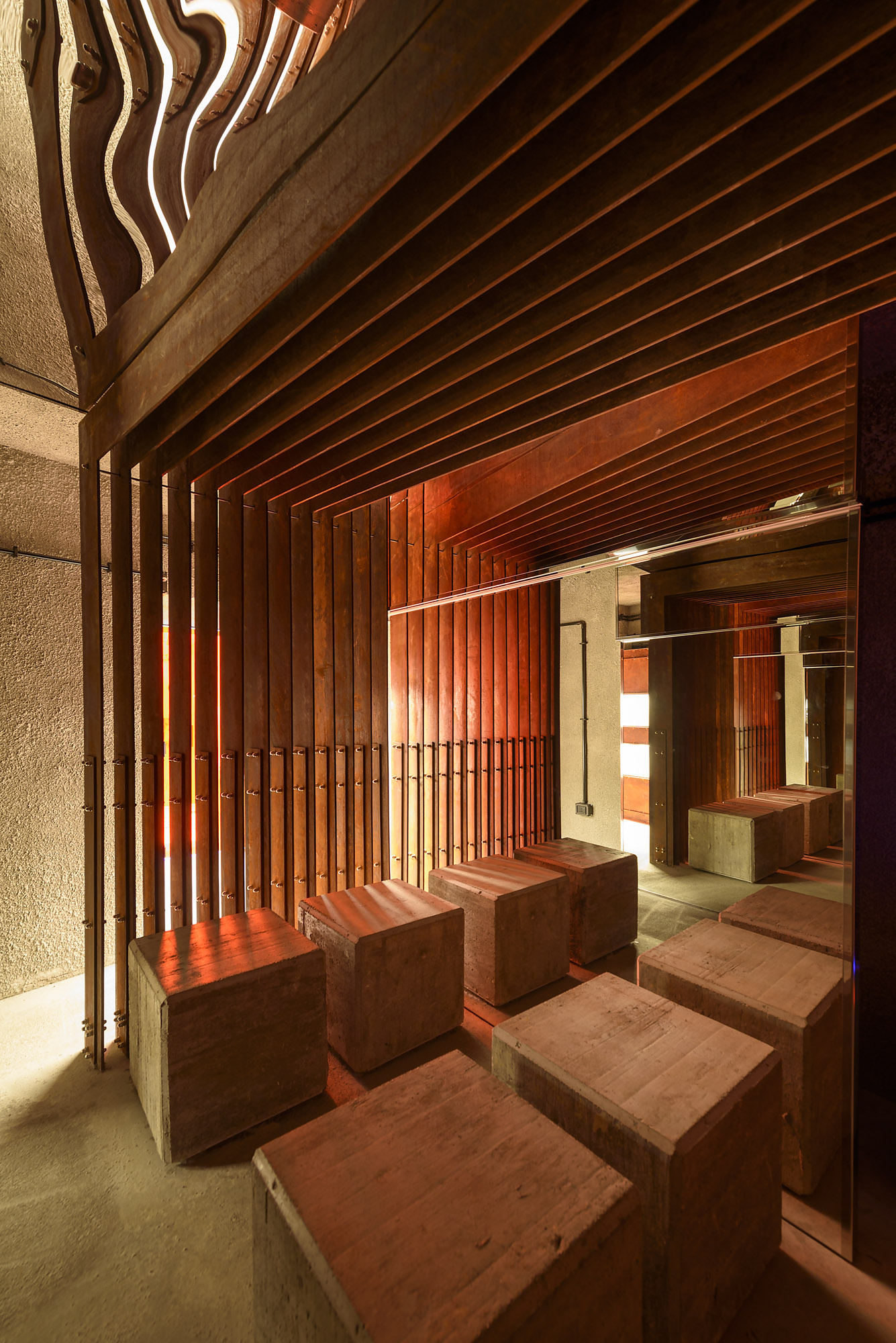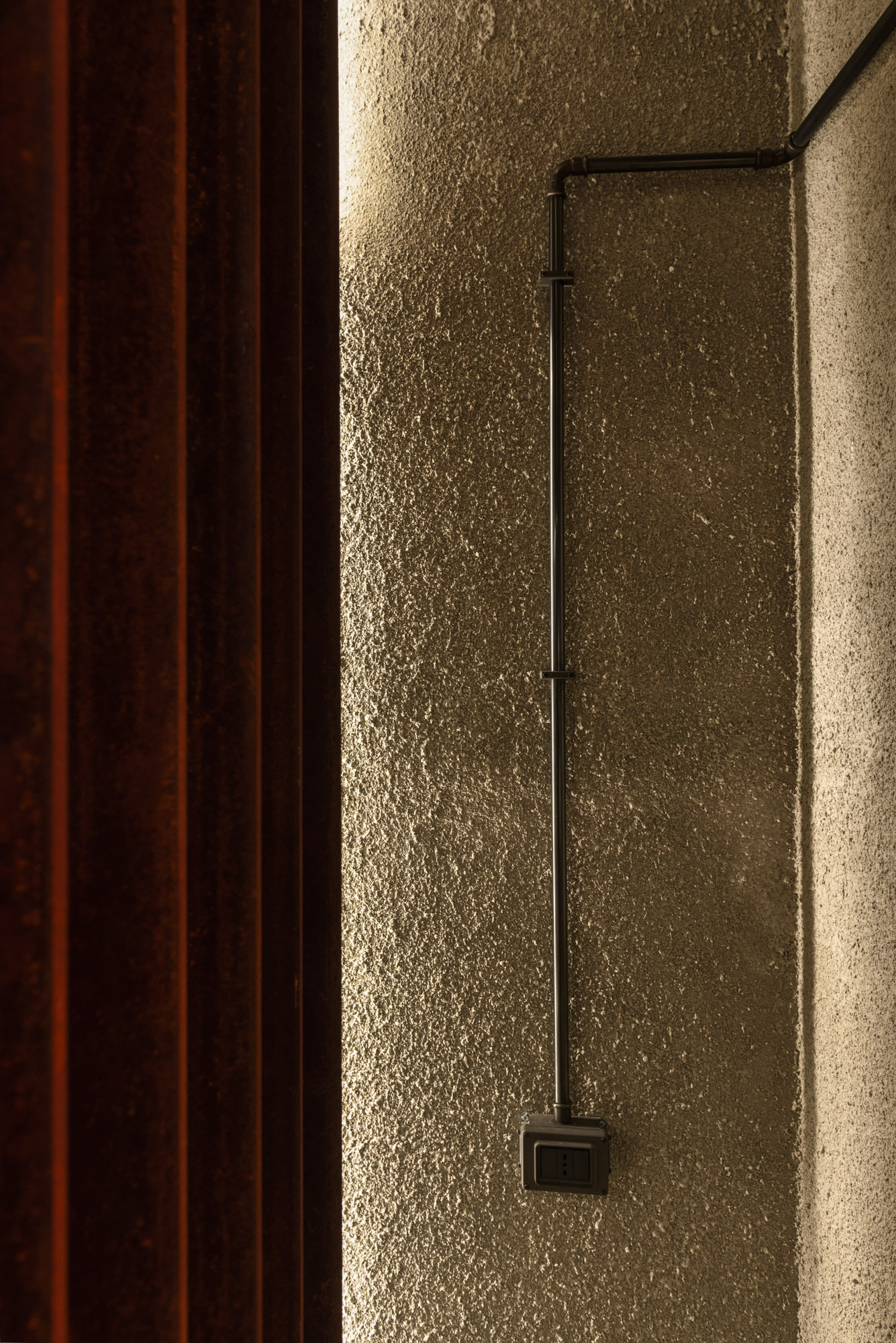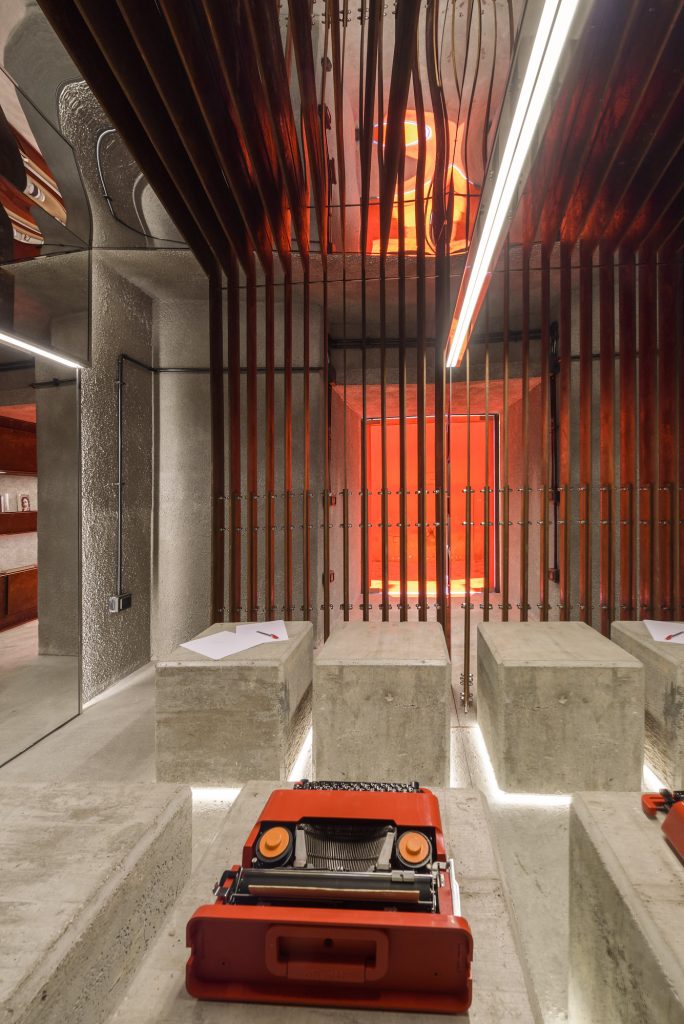"The Poetry Room " was created in the heart of Eboli's old town.
It was born from a vision of the writer Angela Panaro, who after debating with me on the concept of a Room (it can be the stanza of a Poem; but also a place of rest, a dwelling place in Architecture), told me that she wanted to merge the two concepts into one, making the "stanza-strophy," "room-dwelling": a place where one can breathe poetry, "...a real room, as real as life...," a repository of poems. All this would give birth to the Poetry Room.
This was precisely one of the reasons that made me accept this new challenge, to be able to say something about the Architecture-Poetry pair.
Descending the stairs coming from the Benedictine nuns' monastery above or, alternatively, crossing Via Attrizzi, one reaches the small square of the same name: a place where, turning to the right, one finds oneself defaced by a turret from the Porta Rossa.
The color and the material (glass), attract our attention, inviting us to cross it, but not before stepping over a parallelepiped-shaped step, resting on the ground but seemingly suspended in the air, made from eburine stone.
Opening the red door wide, one finds oneself walking through a narrow, low, dimly lit space that, by its very characteristics, is reminiscent of the alleys and tunnels of the medieval city. The medieval passages, were cramped, almost oppressive, traversed by little light. Once traveled, however, suddenly the space opened up into wide places such as squares and courtyards. Our corridor is nothing more than the conclusion of a double path: the one coming from Porta Dogana Square and the Nuns' Monastery, crossing it next to a bookcase rusted like old iron found on the street, we find ourselves in front of a metal filter in the shape of an upside-down "L," which the body will pass simply by stepping aside, while the spirit will go through it to purify itself by "oxidizing" it, leaving close to it everything that pollutes, conditions, deviates and makes the soul unfree, in order to let only the noblest part enter the place, the part that rises above everything and stands pure before Poetry.
Again, as was the case with the alleys of the Middle Ages, the space suddenly widens, the "curtain" opens, and, from an irregular closed quadrilateral shape, as if by magic we find ourselves in a space "without a perimeter," thanks to the mirrored walls that, placed frontally between them, show those who stop the visitor the beginning of a new path: a junction to the east and west of the Room, in unknown directions to be traveled only thanks to the magic of Poetry.
In this first closed then "open" place, there are four concrete cubes that serve as seats for the poets: the statics would like them to be resting on the ground given their weight, but the magic of poetry makes them light, making them lift off the ground thanks to the warm luminous sign of the LED strip that "draws" the room, highlighting all the moments like this one.
No windows in the room, isolated from the world, in a room paved and plastered with cement (a material reminiscent of the structure of the building) applied thanks to workmanship of times past; enveloped only by the glow of Poetry: a red morning glow coming from the front door to remind us of the place to return to after this journey."
words by Architect Luca Bruno
images by Photographer Moreno Maggi
In his project, architect Luca Bruno used the Wallbox in its different inclinations.
The elegance of the shades of theburnished steel juxtaposed with the rigor of the concrete walls give the environment a collected and solemn atmosphere; this accompanies the visitor in an immersive experience, allowing him to estrange himself from the ordinary, connecting with poetry.











